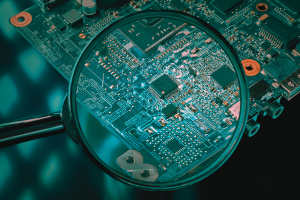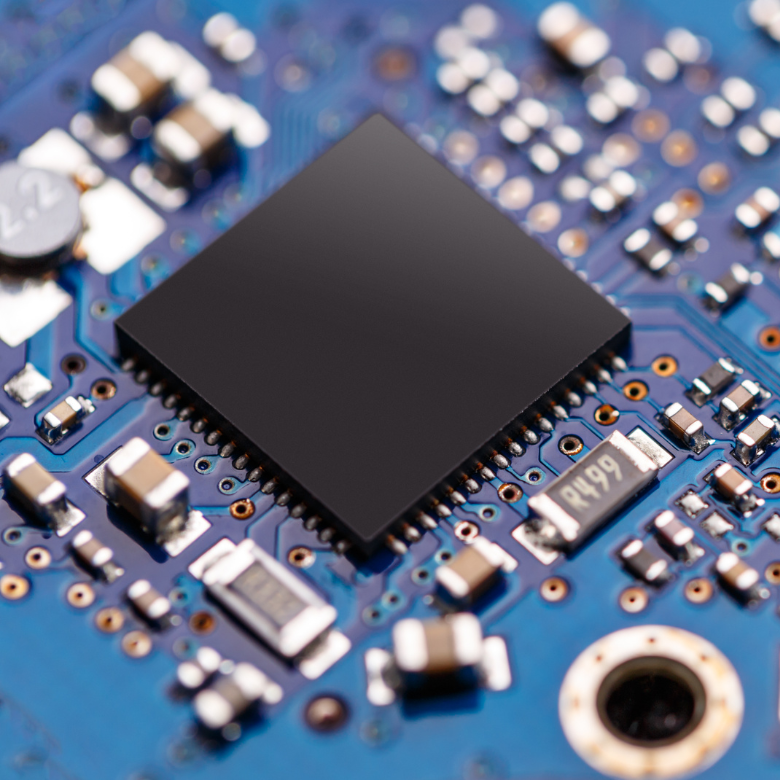Semiconductors are materials that form the basis of modern electronics and information technology. Their electrical properties rank between conductors, such as metals, and insulators, which are materials that do not conduct electricity. Due to their ability to control the flow of electricity, semiconductors are a key component in the manufacture of electronic devices such as computers, smartphones, integrated circuits and many other modern technologies.

What is a semiconductor?
Semiconductors are materials that can conduct electricity, but to a limited extent. Their unique feature is that their electrical conductivity can be controlled and modified by introducing appropriate dopants or changing external conditions such as temperature, pressure or electric field. Under normal conditions, semiconductors act as insulators, but under certain circumstances they can conduct electricity, making them essential in the manufacture of electronic components.
The most common semiconductor materials are silicon (Si) and germanium (Ge), although there are also many other compounds with semiconductor properties, such as gallium arsenide (GaAs) and indium phosphide (InP). These materials are used to make semiconductor components such as diodes, transistors and integrated circuits, which are the basis of modern technology.
Doped semiconductors and their types
Natural semiconductors, such as pure silicon, do not have sufficient electrical properties for use in modern electronic devices. To increase their ability to conduct electricity, a doping process is used, i.e. the introduction of small amounts of other chemical elements into the semiconductor structure.
Depending on the type of dopant, two main types of doped semiconductors can be distinguished:
- N-type semiconductor – formed by doping the semiconductor with elements with a higher number of electrons, such as phosphorus or arsenic. The introduction of these dopants creates an excess of electrons that can move freely in the material, increasing its conductivity.
- P-type semiconductor – formed by doping the semiconductor with elements with fewer electrons, such as boron or aluminium. These dopants form so-called electron holes, which behave as positive charge carriers and also help to improve the conductivity of the material.
Pin-type semiconductors
One of the more advanced types of semiconductor is the pin-type semiconductor, which is a special structure consisting of three layers: a doped p-type layer, an undoped (i) layer, and an n-type doped layer. The pin-type structure is used in components such as pin diodes, photodetectors and power transistors, as it allows better control of current flow and has a high resistance to breakdown.
Applications of semiconductors
Semiconductors are the foundation of modern electronics. Their conductive properties, which can be precisely controlled, make them applicable to virtually all electronic devices. Key examples include:
- Transistors – small components that act as switches or amplifiers in electronic circuits. Thanks to transistors, it is possible to create logic circuits, which are the basis of computers and microprocessors.
- Diodes – electronic components that conduct current in one direction. They are used in rectifier circuits, as well as in LED technologies, i.e. light-emitting diodes.
- Integrated circuits – complex systems made up of many semiconductor elements (transistors, diodes) that act as the heart of computers, telephones and other electronic devices.
Semiconductors also have applications in photovoltaic technology, where they are used to convert sunlight into electricity in solar panels.

Types of semiconductors and their importance
Semiconductors can be divided into two main groups: elementary semiconductors and compound semiconductors. Elementary semiconductors are single-component materials such as silicon (Si) and germanium (Ge). In contrast, compound semiconductors are made up of two or more elements, such as gallium arsenide (GaAs), which is widely used in radio and optoelectronic technologies.
Each of these types of semiconductor has its own specific properties that are crucial for different applications. For example, silicon is the most commonly used semiconductor material in the manufacture of integrated circuits, while gallium arsenide is used in high-frequency devices such as satellite dishes and radar.
Semiconductor materials in semiconductor manufacturing
Semiconductor manufacturing requires the use of high-quality chemical materials and advanced technological processes. A key role in the production of these materials is played by the PCC Group, which offers a wide range of chemical raw materials necessary for technological processes, including purification and bringing semiconductors to the right purity. The purity and quality of semiconductor materials, such as silicon, have a direct impact on the performance and stability of the final electronic products.
The PCC Group supplies chemicals used in semiconductor manufacturing processes, which are used for silicon wafer fabrication, material doping and semiconductor surface cleaning. With its advanced technology and innovative solutions, the PCC Group supports the development of modern electronic devices and contributes to technological progress around the world.

Semiconductor manufacturing
Semiconductor manufacturing is a complex process that involves many technological steps. The first step is to obtain high-purity silicon, which is then formed into so-called silicon monocrystals. These monocrystals are then cut into thin plates called wafers, which form the basis for further production steps.
The next step is doping, i.e. the introduction of dopants such as boron or phosphorus into the silicon structure to modify its conductive properties. The semiconductors are then formed into specific components, such as transistors or diodes, using precise photolithographic techniques. Ultimately, semiconductors are assembled into larger electronic circuits, such as processors or memories, which are used in many electronic devices.
Semiconductors play a key role in the development of modern technology. Their ability to conduct electricity in a controlled manner makes them essential in electronics manufacturing. Thanks to the variety of semiconductor materials, such as silicon, germanium or gallium arsenide, and advanced manufacturing processes, it is possible to create increasingly sophisticated electronic circuits. As a supplier of chemical raw materials for semiconductor production, the PCC Group contributes to the development of this sector by supporting the technological processes required to produce high-quality semiconductors.
- https://www.britannica.com/science/semiconductor
- https://news.stanford.edu/stories/2023/09/stanford-explainer-semiconductors